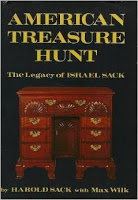SOURCE: Kaiser Health News » Insurance – Read entire story here.
Category: HEALTHCARE/MEDICAL
A notable passing
The New York Times reports on the closing of the F. A. O. Schwarz toy store at the corner of Fifth Avenue and 57th Street. Many people will remember a scene from the store in the Tom Hanks movie Big.My memory is related to that scene. My best friend growing up, Michael Sack, was the son of Harold Sack, one of the brothers who owned and operated Israel Sack, Inc., the most prominent antiques dealer in America. They sold furniture to Jackie Kennedy at the White House, among other places. Their showroom was on 57th Street, just a few yards from Schwarz. As young boys, Mike and I would sometimes accompany Harold to work, and we’d play ball with our pink “Spauldeens” (yes!) among the
Narrative Matters: On Our Reading List
Editor’s Note: “Narrative Matters: On Our Reading List” is a monthly roundup where we share some of the most compelling health care narratives driving the news and conversation in recent weeks. The One In 40,000 Parents think their children are one in a million, but Liz Savage knows what it means to have your child be the statistical anomaly. One in 40,000 measles, mumps, and rubella (MMR)-vaccinated patients will be affected with immune thrombocytopenia purpura. Her son, whom she refers to as “Oscar” in her story for Slate, “My Son, the Statistic,” was hospitalized with low platelet counts, as his body adversely reacted to the immunization. Oscar recovered, and despite the stress of the ordeal, Savage says she’d still vaccinate him again. “I had to weigh my
Are marketplace enrollees sicker than those with employer-sponsored insurance?
To date, little is known about the health status of the 7.3 million Americans who signed up for health insurance through either federal- or state-run exchanges created by the Affordable Care Act…
New technology could save the lives of more transplant patients, new research suggests
New technology could ‘significantly’ improve stem cell transplant outcomes, new research by the blood cancer charity Anthony Nolan has revealed.
Preventive Care Does Not Want To Be “Free”
One conceit behind Obamacare is that if the government mandates preventive care be “free”, people will use it. The notion should appeal to free-market types, too: As the price of a service drops, the quantity demanded should increase. However, it is not that simple in health care. Let’s take another dive into the always heated and controversial discussions about preventive care for women (such as our recent entry about mammography). New research shows that women under 65 are over screened for osteoporosis, and women aged 65 and over are under screened, although older women get screened for “free”: Osteoporosis screening rates jumped sharply at age 50, despite guidelines suggesting that screening only begin at age 65, unless a woman has certain risk factors. However, the study also found that
Where you stand . . .
In one of the more interesting demonstrations of “where you stand depends on where you sit,” please note the co-author of this well done Perspective article in the NEJM, “The Good Merger.” The key quote:A “good” merger or affiliation is one that increases the value of health care by reducing costs, improving outcomes, or both, thereby enabling providers to generate and respond to competition. The all-too-common alternative is a merger intended to reduce competition — to ensure referral streams (which would otherwise be earned through superior offerings) or to help providers negotiate higher prices and thereby avoid the difficult work of improving outcomes and efficiency. The co-author, Thomas H. Lee, now the chief medical officer of Press Ganey, was previously
Parkview Health plans $80M cancer center in Fort Wayne
Parkview Health in Fort Wayne has announced plans for an $80 million cancer center on an existing campus in the city. The plan was announced Wednesday.
Researchers identify unexpected functions in the determination of height for a gene expressed in sperm
An interdisciplinary research team led by the deans of Virginia Commonwealth University’s Schools of Medicine and Engineering has for the first time explained the association between human height and a specific protein-coding gene that is found in sperm.
Modifying stem cells shows initial promise in battle against muscular dystrophy
A group of University of Florida Health researchers has found a way to reverse the effects of one type of muscular dystrophy by editing the genome of nervous system stem cells.
Medicaid expansion rally targets uninsured in Hialeah
Medicaid expansion supporters are targeting Hialeah – the zip code that saw more health insurance sign-ups than any other in the country. Several other zip codes with the highest enrollment were also in South Florida.



